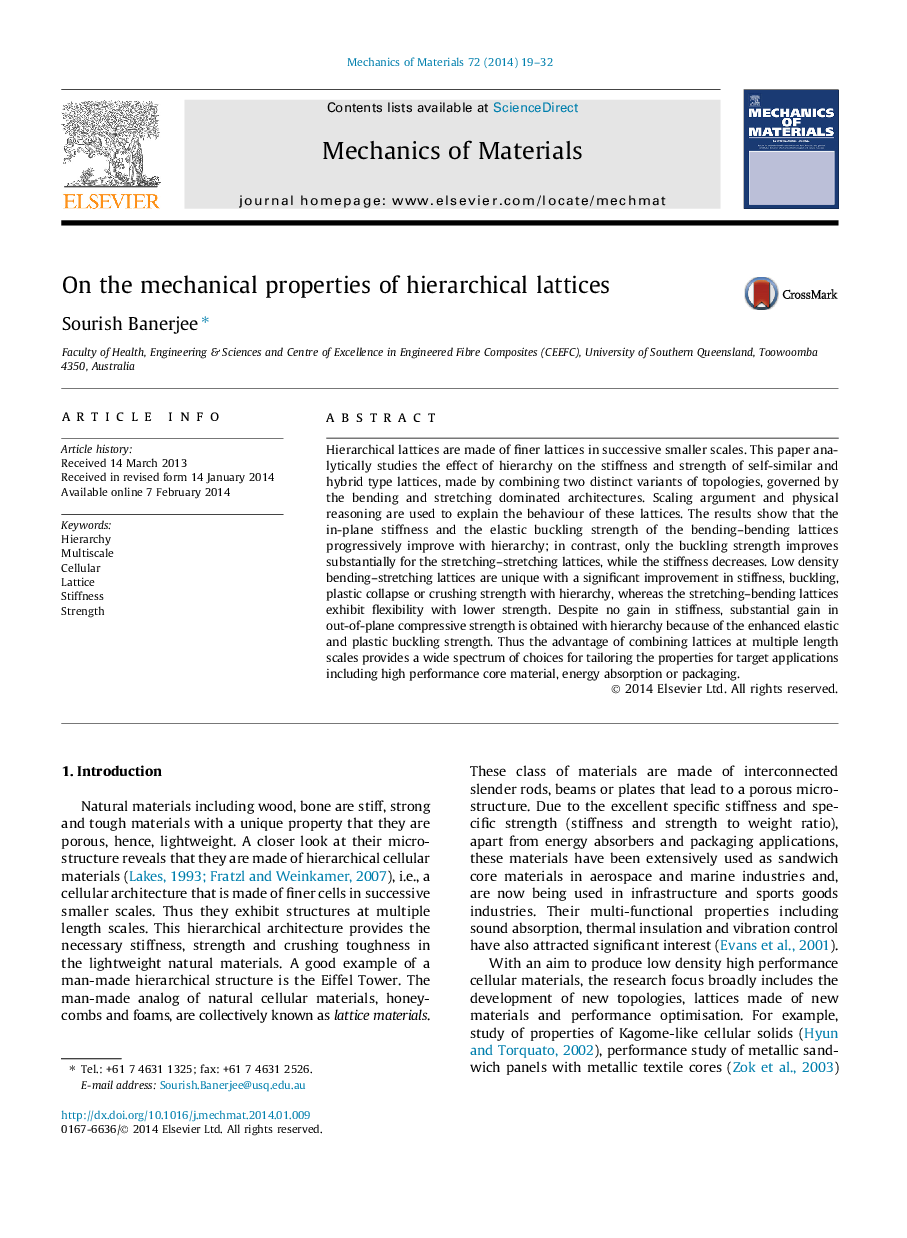| Article ID | Journal | Published Year | Pages | File Type |
|---|---|---|---|---|
| 799770 | Mechanics of Materials | 2014 | 14 Pages |
•Effect of hierarchy on the stiffness and strength of lattices was studied.•Lattices were made by combining stretching and bending dominated topologies.•Both the self-similar and hybrid types of hierarchies were considered.•A wide range of material properties in design space is obtained using hierarchy.•Hierarchical lattices were shown to be ultralight high performance materials.
Hierarchical lattices are made of finer lattices in successive smaller scales. This paper analytically studies the effect of hierarchy on the stiffness and strength of self-similar and hybrid type lattices, made by combining two distinct variants of topologies, governed by the bending and stretching dominated architectures. Scaling argument and physical reasoning are used to explain the behaviour of these lattices. The results show that the in-plane stiffness and the elastic buckling strength of the bending–bending lattices progressively improve with hierarchy; in contrast, only the buckling strength improves substantially for the stretching–stretching lattices, while the stiffness decreases. Low density bending–stretching lattices are unique with a significant improvement in stiffness, buckling, plastic collapse or crushing strength with hierarchy, whereas the stretching–bending lattices exhibit flexibility with lower strength. Despite no gain in stiffness, substantial gain in out-of-plane compressive strength is obtained with hierarchy because of the enhanced elastic and plastic buckling strength. Thus the advantage of combining lattices at multiple length scales provides a wide spectrum of choices for tailoring the properties for target applications including high performance core material, energy absorption or packaging.
